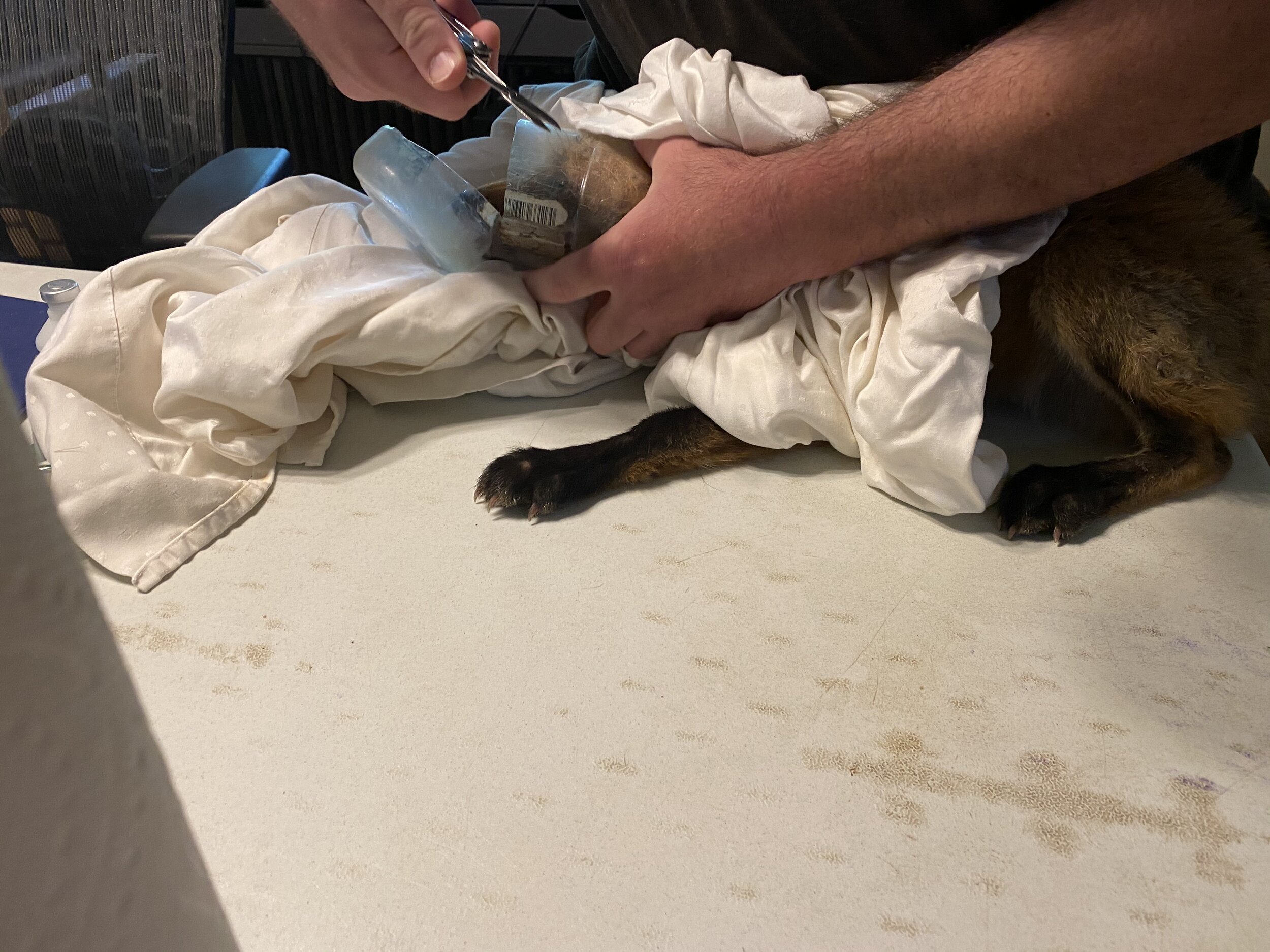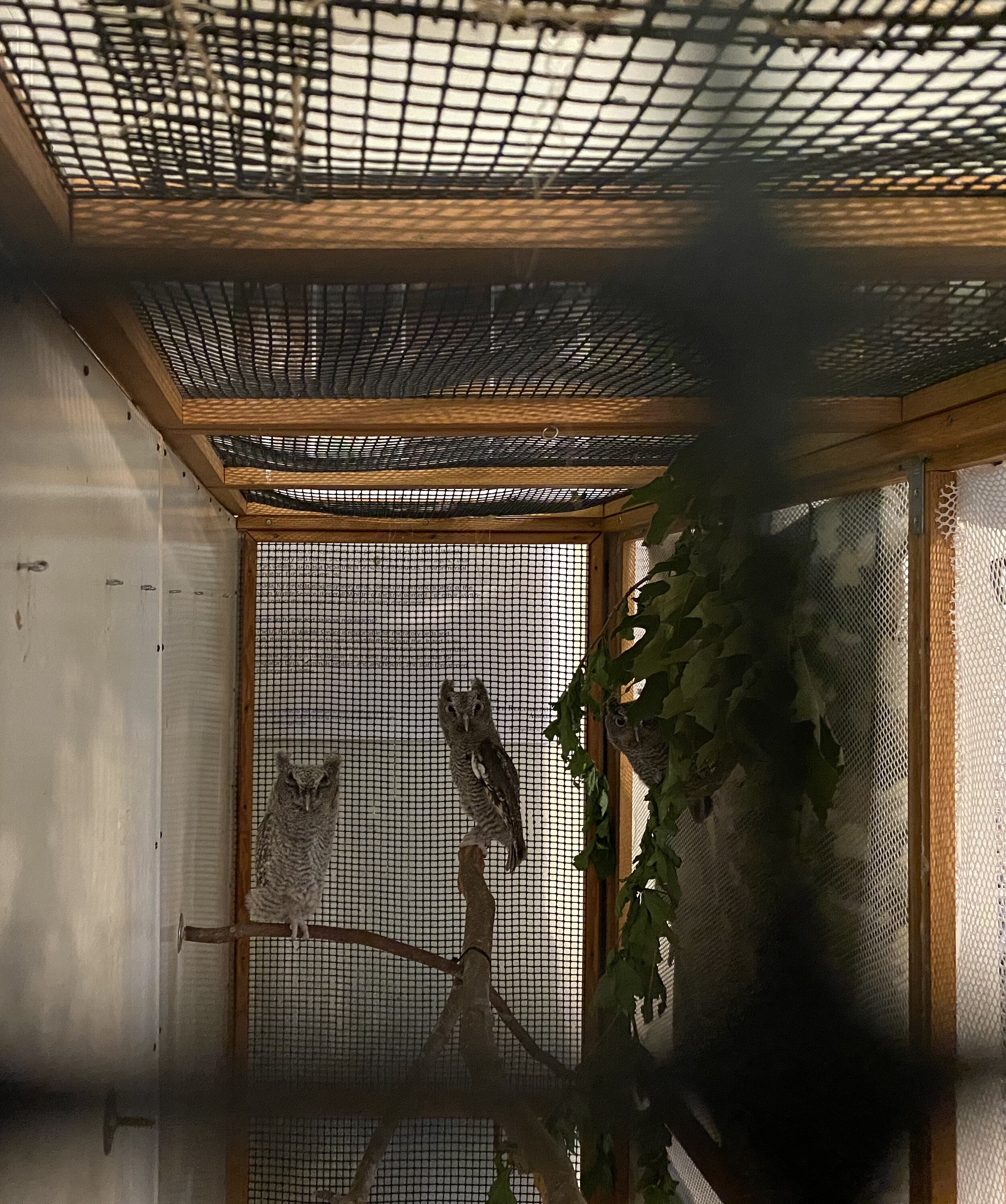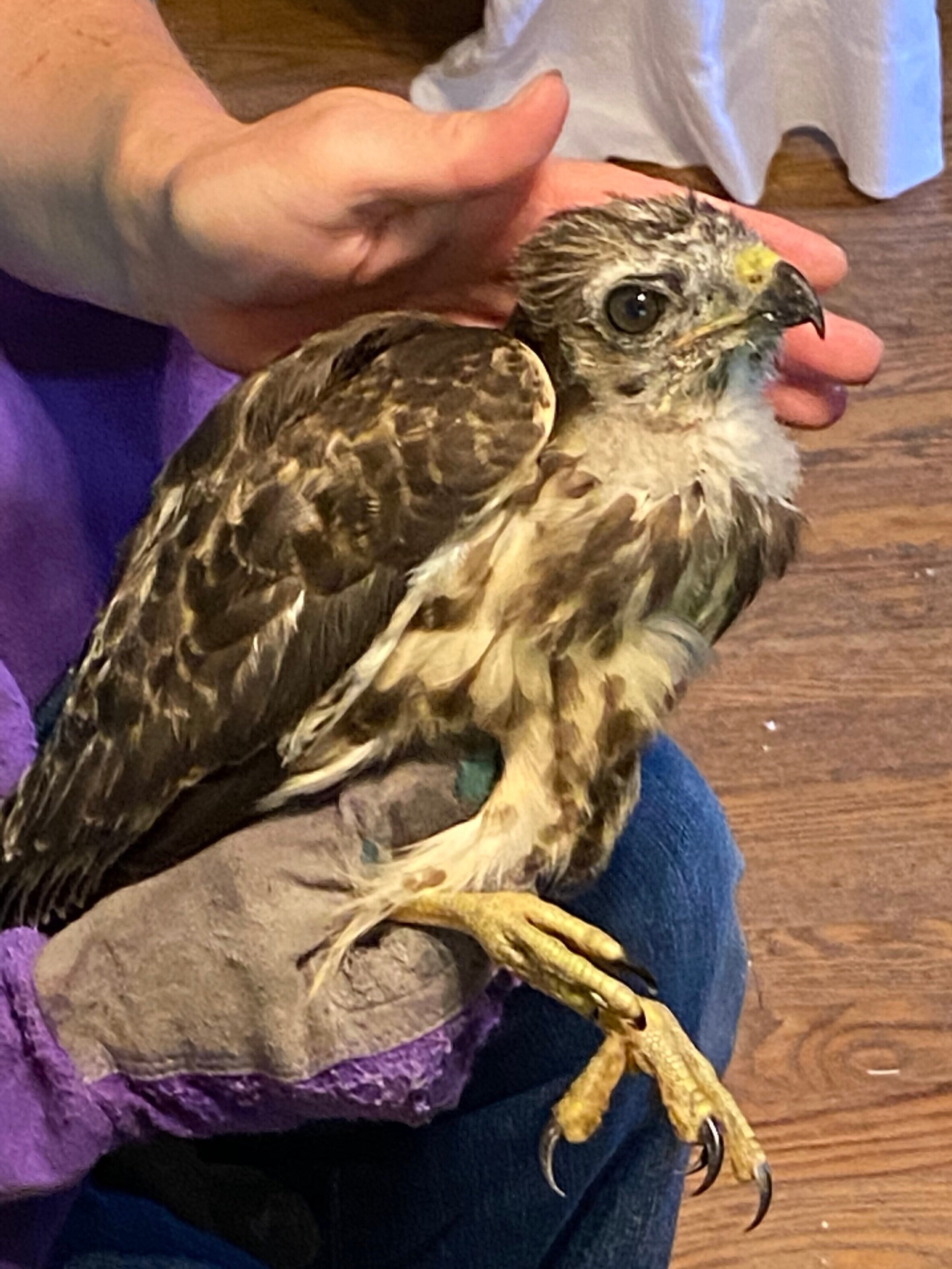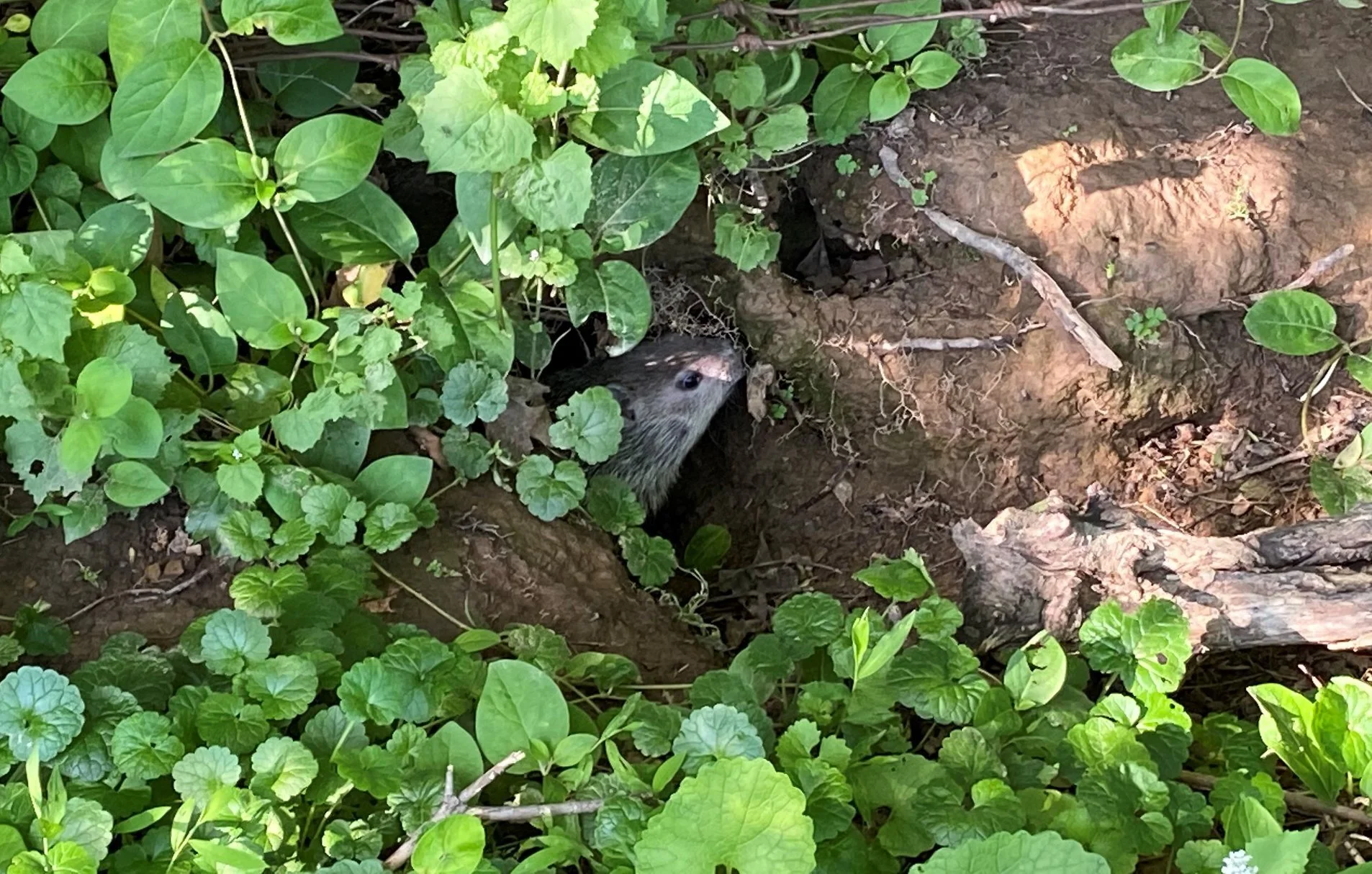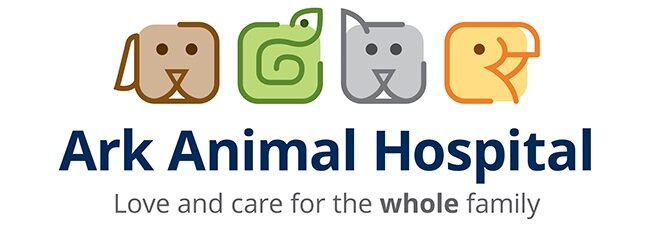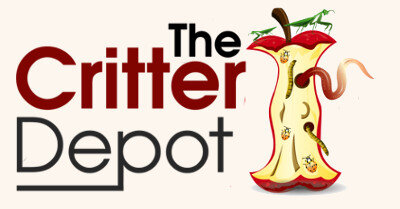The Kingbird is a type of flycatcher, grabbing insects in midair. A couple of attributes may contribute to its name. Firstly, Kingbirds have hidden crowns of red or yellow feathers that are flashed when a potential predator is encountered. Secondly, they sit atop the world on the highest perches and survey their domain. Our little patient, here, will grow up to preside over a kingdom of her own.
Baby Chimney Swifts Admitted
As their name suggests, these swifts nest in caves, on cliffs and in chimneys. Among other interesting features like their nimble aerial acrobatics, they roost by hooking onto vertical surfaces. They are able to achieve this feat due to the unusual configuration of their feet. As opposed to perching or climbing birds, two of the Chimney Swifts’ toes can point backwards or forwards (Pamprodactyl, below), allowing them to hang out in unlikely places.
Prepping for Treatment
This hawk is about to be treated with medication and given drops for an eye wound. A speedy recovery!
Ducklings
Though from different families and of different ages, these ducklings have formed a flock, with the older ones even being protective of the younger ones.
Fox Rescue
This juvenile fox came in today with his head trapped in a plastic jar. He’d been this way for several days. Our rehabilitator, with the help of his Leatherman tool, was able to cut and remove the jar.
Eastern Screech Owls
Can you spot all three of the juvenile screech owls in this photo?
Turkey Vulture
Patient 2360, a turkey vulture, enjoying the afternoon sunshine.
Virginia opossum
The opossums first line of defense when afraid is to hide, but when necessary it will hiss, growl, bare its teeth, and even lunge to scare potential threats. These juveniles are practicing their tough guy look.
Blue Jays
We’ve cared for a number of Blue Jays this spring. These two are gaping, or asking to be fed.
Juvenile Red-tailed Hawk
Philly ACCT brought us this juvenile red-tailed hawk a few weeks ago. He’s being held by one of our volunteers while he waits to be fed. He’ll stay with us for the summer while he learns to hunt and feed himself and develops his flying skills.
Kestrel
The kestrel is a small falcon that eats insects and small prey. This young kestrel is resting between bites while being hand fed.
Box Turtle Injuries
Though tough and able to protect from many dangers, a turtle shell was not designed for the risks of the modern world. During the last few weeks of May, we received a number of turtles with shell injuries. Most had been hit by cars, probably while crossing the road in search of a place to lay eggs. This turtle has an injury to his plastron, the bottom shell, and will be with us while it heals.
Check Out These Cute Kits!
These four little skunk kits are being cared for while their mother recovers after being hit by a car over the weekend. They’re taking formula and learning to transition to solid foods. Check out an article on skunks by our Executive Director, here.
Peak Baby Bird Season Has Arrived
Baby bird season is here! If you found a baby bird, we always tell people the best way to help is to reunite it with its parents. If the baby is injured, check out our guidance here in the FAQ. Feel free to give us a call with any questions. Newly arrived White-breasted Nuthatches (top) and Blue Jays (bottom) are coming along nicely.
Baby Woodchuck Release
Dig it, releasing the baby woodchuck from a few weeks ago that was caught up in netting. He jumped out of the release box and right into an already-existing but disused woodchuck hole, then turned around and poked his head out, like far-out man. Ready-made home.
Fledgling Peregrine Falcon
This fledgling peregrine falcon, a threatened species in PA, was treated for a week at Philadelphia Metro Wildlife Center before being released back to Manayunk from whence it came by Art McMorris, wildlife biologist who is the peregrine falcon coordinator for the Pennsylvania Game Commission, who has done a wonderful job preserving this species. Thank you to Dr. Emily Seymour for doing the radiographs.
Itchy Business
Good news for raccoon #0028. He’s a long term patient we are treating for sarcoptic mange. He’s looking brighter and his appetite has improved since he’s been in treatment. If you are concerned about an animal who has mange, please give us a call. There are several options for ways to help an animal with this condition. Mange is common in foxes and raccoons, but other animals can get it too. Observable symptoms include loss of fur, seeing the animal scratching, and wounds on the body (from the incessant scratching). The good news is that it responds well to treatment, giving the animal relief from a very cruel infection. If you see an animal you think has the condition, we are happy to advise.
January 25, 2020 GOLDFINCH #2376 RELEASED
Goodbye, Goldfinch #2376. We will soon be releasing this Goldfinch back to where it was found. We release all adult animals back to their own territory. The Goldfinch was successfully treated for conjunctivitis, an eye infection to which finches are particularly susceptible. This bird 's treatment required antibiotic eye ointment, as well as 21 days of oral antibiotic to ensure the bird was free from infection and not a carrier. Although the bird probably didn't enjoy such a long captivity, this ensures freedom from disease before release. Good luck finch!
Canada Goose Rescue Story
By Michele Wellard, Assistant Director
Here is a rescue story from a few years ago, just in time for throwback Thursday.
We got a call at the wildlife clinic about a goose at a local canal, 2 minutes away, who had a blow dart through his neck. Rick and I went down to the site, and there were many Canada Geese there – at least 30 hanging around. Soon, though, we spotted the one with the dart. It went straight through his long neck, and out the other side.It looked like this:
About 4 inches long, this was what was in the goose’s neck
Since we know the anatomy of a goose, we were worried that this dart penetrated the esophagus and or the trachea, so it could either start to obstruct his breathing or his eating.
So, we started the process of trying to catch him. We brought lots of goose treats, including bread, which is not good for them, but which they like and they are used to people feeding to them, and this was an emergency. (this is the ONLY time I would support feeding them bread. This was a life of death emergency for the goose, and we needed him to want to come to us). Our objective was to get ‘dart goose’ close enough to grab.We brought healthy goose snacks, too - cracked corn, apple and popcorn.
So we started to feed the geese and get them to come to us. They did. They came right up to us, close enough to touch. They ate our food. Except dart goose, who stayed on the periphery, only occasionally eating. He was nervous, possibly because he knew of his ‘difference’ or because he knew, despite the subtle nonchalance we were trying to project, that we were actually focused on him. Who knows what clues we were showing with our body language? He was much more nervous than the other geese.
After a while, we gave up. We came back the next day, and gave up, too. Ultimately, we came back 5 days in a row. Rick and I were getting good at giving each other signals to isolate and surround the ‘target’ goose, but still he evaded us. We hadn’t t actually made an attempt to grab him at this point yet.
After about 3 days, the dart goose started to eat our food more readily. He started to trust us and join the flock. On the fifth day, we got him close. He was eating out of Rick’s hand. Rick looked at me and signaled me with his eyes to guard the goose’s escape. Then, he grabbed for the goose, and got him. All the other geese flew and ran away. The dart goose looked at us like we had betrayed him, and we had. We earned his trust over 5 days, and betrayed it by grabbing him.
We stuffed him into a box and took him to the clinic. I wanted to cry.
The dart was cleanly right through his long neck. It looked like we could pull it right out, but we felt a tiny lump at the point of entrance and exit of the dart through his neck. We decided to take him to one of our vets with an xray machine.
The goose with the object of human cruelty straight through his neck.
It turns out the dart went right through his trachea, but not his esophagus. This is why he could still eat with no problem. But the lumps we felt on the outside were present on the inside, too – scar tissue forming around the entrance and exit of the dart. The vet said that the scar tissue would grow , both on the inside and outside, eventually obstructing the goose’s breathing and killing him. The vet felt confident, though, that he could pull the dart straight out. He did.
We kept the goose a few more days to give him a few more free meals so he could put on a little weight. Then we took him back to the canal, and to his flock. He leapt from our box, back into the water, and joined his flock, an outcast no more.
Free of the injurious object, the goose recovers for a few days prior to release
Great Horned Owl - A Patient Story
By Michele Wellard, Assistant Director
This is the story of a Great Horned Owl and his initial treatment at the wildlife center. A caring member of the public was concerned enough to call us when she found him on the ground and follow our instructions for capturing and transporting him. She brought him in a large plastic tub.
I opened the container, carefully looked inside, and saw those huge yellow eyes looking up at me. He was beautiful, but he looked weak.
Director Rick Schubert and I examined him. First, Rick held those dangerous feet (Red Tailed Hawk talons can hurt you, but Great Horned Owl talons can put you in the hospital) while I prepared fluids to give him. Rick said the owl was emaciated and dehydrated. Suddenly, we saw the feather flies on his body. Feather flies, also called hippboscids, are evil. They dart and scurry around and you see them for a second, and get ready to grab one, and they go bury themselves deep in the feathers again, disappearing. Rick grabbed a fly and smashed it with his thumb. CRACK, it went, spewing the owl’s blood on the white exam table sheet. Then I saw one and grabbed it and did the same thing with my thumb. CRACK. The blood spewed, and I swear the thing came back to life. I had to take my thumb and mash and mash and mash it onto the white sheet to finally kill it.
I got out the feather lice/fly spray and sprayed the owl all over, under the wings, on his back, near his vent, all over. Then we went back to preparing the fluids. Suddenly, the flies got angry at the chemical killer, and started coming out of the owl en masse. They scooted all over the owl. They flew off him onto my shirt, into my Rick's eyes, into my mouth. I spit them out and killed them. Rick picked them off his cheek and shirt. We worked on killing them with our fingers, Rick one handed since he still had the owl’s feet (the owl’s head was covered to reduce his stress). We killed about 40 feather flies with our fingers, leaving 40 bloody smears on the sheet, as they flung themselves off the owl and onto us.
Rick flipped the owl so his feet were down so I could access his back. I parted his feathers to give him an injection of fluids. His pink skin was covered in red feather fly bites. I wanted to cry for this poor creature.The flies continued to jump out and we continued to search and kill them. Then I parted the feathers on his neck and saw…maggot eggs.
Flies love to lay their eggs on a compromised, sick bird, and they go deep into the blood feathers (a blood feather is a feather that is still growing, so still has a blood supply). Rick removed as many maggots as he could physically with hemostats (metal grabbers)
Rick then transferred the feet to me and I held them while he left the room to prepare some oral rehydration fluid, L-Glutamine, and Capstar (which kills maggots from the inside of the animal). I was super aware. I had the claws of one of the most powerful, dangerous animals we handle, and I was restraining him. It may seem strange I wasn’t wearing gloves. Not for bravado purposes, but your bare hands have more control. It’s easier for a powerful animal to slip out of hands you can’t feel.
So, while he was out of the room, it was just me and the owl. He was on his back, his head covered, with me holding his powerful feet. Flies were getting irritated and leaving his body, flying up into my face, smacking me in the eyes, hitting my tongue as I took a breath. I spit one out on the floor as I remembered not to let those talons go. I was able to kill 5 or so flies as I held the feet with one hand.
Rick came back and we transferred the feet to him. He pried open the owl’s mouth and I inserted the long tube down his throat, made sure it was in place, and pushed the plunger. Then he put the owl face down and I gave him his fluid injection.
The poor dear owl, once the most fierce killer, looked like he had given up. He must feel so sick, and on top of that, what he must perceive as predators are grabbing, poking and prodding him. His head slumped and he closed his eyes. I thought he might die. I try to convey to these patients, even though they can’t understand, “I won’t hurt you. I am trying to help you. I am sorry about this.”
Because we sprayed his feathers, they were wet. In his weakened condition, there was a danger of him becoming hypothermic . We put him in an incubator and covered it to make it dark. In a half an hour, I checked on him. He had lifted his head. He looked brighter. He started actually clacking his beak at me, the universal owl signal for “*@*&*) ”!
We had made some progress.
We treated him for several days, and the owl started eating, perching, and hooting. After a few weeks, he really started to recover
Not too long after, he was released back into his wild territory.







